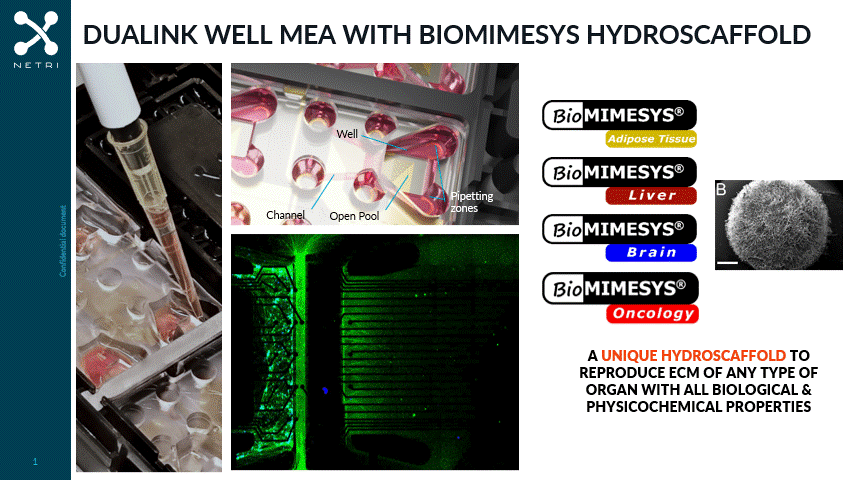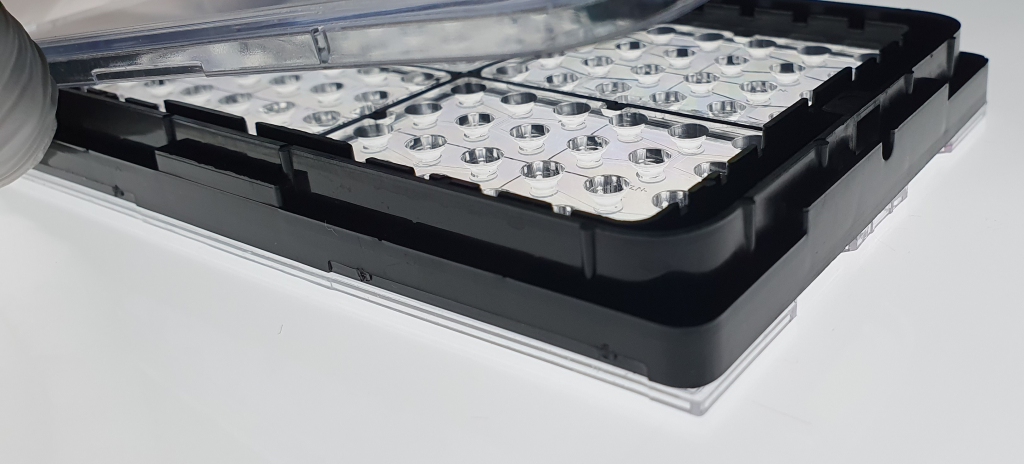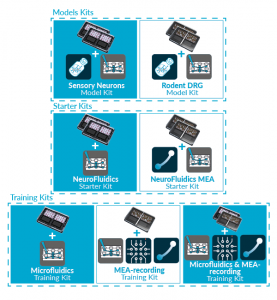ONCOLOGY PROGRAM.
PAIN MANAGEMENT.

Chemotherapy-Induced Peripheral Neuropathy.
60-80% of oncology patients suffer from peripheral neuropathic pain during treatment. In 20-40% of patients treated, the pain becomes chronic.
To address this concern, NETRI is establishing an in vitro CIPN platform using hiPSC-derived sensory neurons in an organs-on-chip devices compatible with MEA.
This platform enables functional analysis and prediction of chemotherapy-induced pain effects, providing physiologically relevant data to guide oncology drug development and support the evaluation of therapeutic combinations.
• Compartmentalized coculture (hiPSC derived sensory neurons and astrocytes).
• Compartmentalized triculture (hiPSC derived sensory neurons, dorsal horn neurons and astrocytes).
• Selection of a panel of reference compounds to span key mechanistic pathways.
ADVERSE EVENTS.

Emetic Response.
Drug-induced gastrointestinal toxicities (DI-GITs) frequently emerge only after therapeutics enter clinical trials. This late appearance stems from the absence of robust experimental platforms for early detection and guided optimization.
To address this unmet need, NETRI has initiated an in vitro DI-GITs platform using hiPSC-derived sensory neurons in an organs-on-chip devices compatible with MEA to predict emetic response through the serotonin pathway activation.
• Captures activation of specific gut neuronal pathways involved in drug-induced vomiting, which are triggered by serotonin and can be blocked by anti-emetic drugs—highlighting its utility in pharmacological screening.
• Reliably detects gut-relevant inflammatory (LPS) and neuroprotective (propionate) signals through measurable changes in electrophysiological activity—demonstrating its potential for gut-brain studies.
TOXICOLOGY.

Liver Toxicology.
NETRI recently announced the acquisition of HCS Pharma's assets and BioMIMESYS® products. BIOMIMESYS® is a breakthrough 3D cell culture matrix, mimicking in vivo conditions to recreate functional organs in vitro, enhancing predictivity.
• Long-term, functional 3D hepatocyte cultures.
• Improving liver toxicity prediction by mimicking the in vivo microenvironment in static and dynamic systems.
CANCER.

Pediatric Glioblastoma.
NETRI has demonstrated that co-culture of glutamatergic neurons with pediatric high-grade glioma cells enables functional, patient-derived modeling of tumor-neuron interactions.
This provides a unique platform to study tumors effect on neuronal activity and open the way for personalized therapeutic screening in brain cancers.
• Glioma cells lines (UW479 or BT25).
• Morphological effect of glioma cells lines on glutamatergic neurons.
• Functional effect (MEA) of glioma cells lines on glutamatergic neurons.
OTHER POSSIBILITIES.
Next Applications & Models.
NETRI's patented technologies make it possible to innervate any organ, using electrophysiological recordings as a unique readout.
• Innervated tumoroïds.
• Cardiac toxicity (innervated cardiac muscles).
• Brain toxicity (innervated BBB).
• Neuroinflammation.
• Specific organs ECM (liver, skin, brain, oncology) with BioMIMESYS®.
THE WAY WE WORK.
Out-Licensing.
• Co-development to set up new model & digital library.
• Technology transfert to integrate our technologies in your routine drug development.
• Out-licensing to feed your digital library with new signatures.
Organs-on-chip devices.
• Ready-to-use organs on chip devices.
• 2D and 3D cell culture.
• Innervation & vascularization.
• Classic readouts (sequencing, dosing, imaging...).
• Electrophysiology readouts (MEA).


